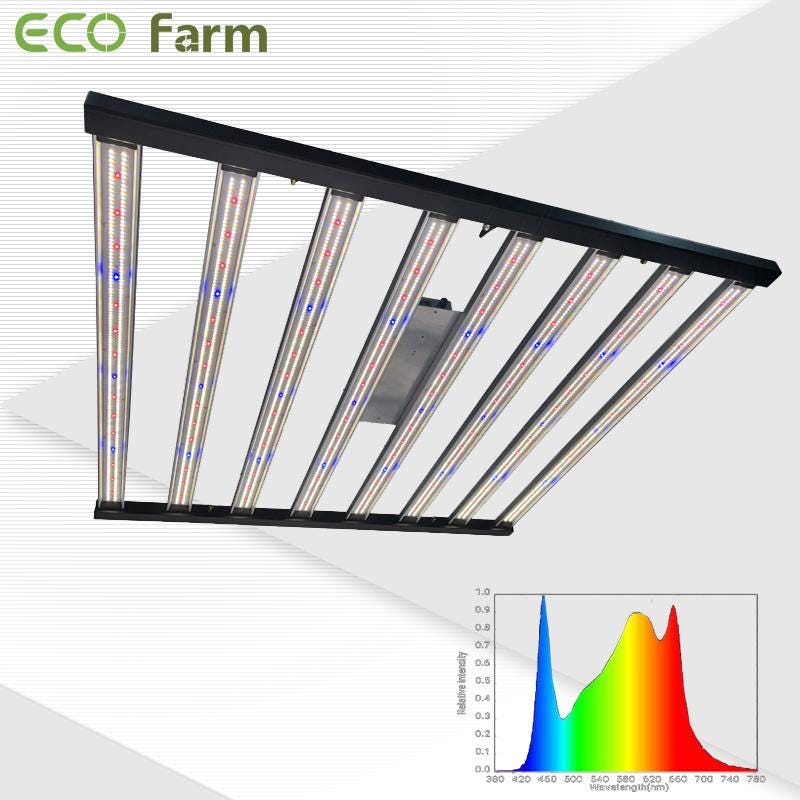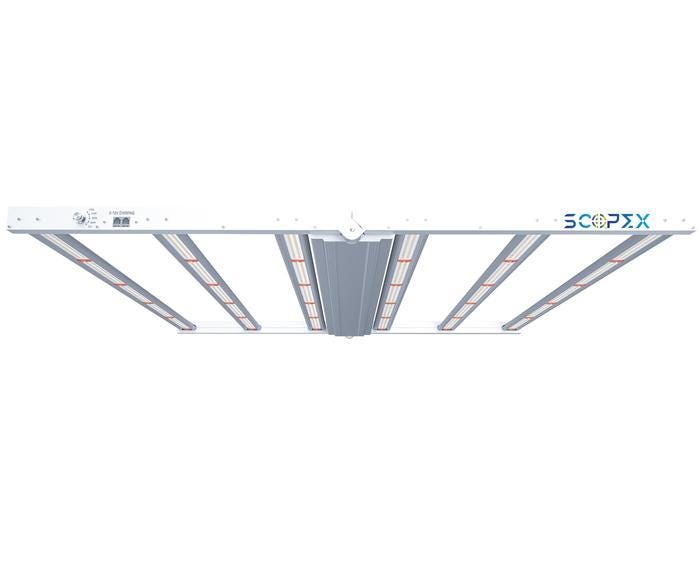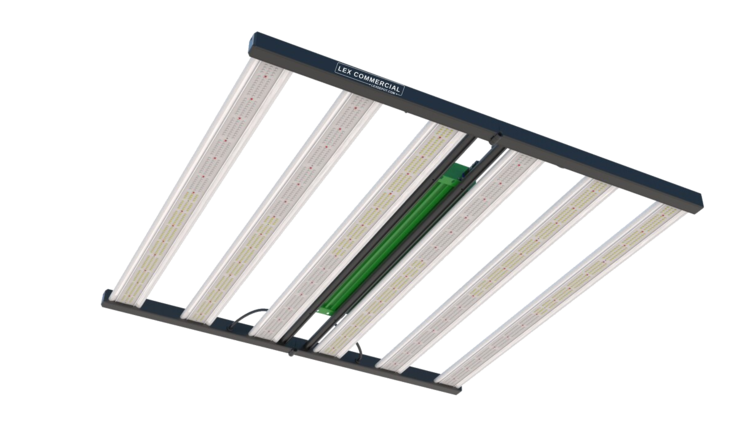CMH VS LED : Which is the Best?
Many people don’t know the difference between CMH (Ceramic Metal Halide) and LED grow lights. The aim of both of these light types are to provide plants with every light on the spectrum that is needed for healthy and quick growth, but what each light offers is different. So, which type of light is the best? What are the advantages and disadvantages of CMH vs LED grow lights? We have put together all the information that you need in order to know which type of light will best suit your plants.
What is CMH?
Ceramic metal halides (CMH), or Light emitting ceramic (LEC). These two lights feature the same bulb and technology, just under different names. CMH fixtures pull low watts (315 Watts), but its output can be compared to a 600-watt HPS. A CMH can cover large areas, making them the most energy-efficient choice when compared to other gorw lights.
Replacing outdated (SE) HPS, CMH lights took the market as the new innovative technology. CMH fixtures and bulbs offer a lifespan greater than traditional HPS and a higher color rendering index (CRI). This means that it is closely mimicking the natural spectrum of the sun. The SunSystem Flower Power LEC 315 packs a whopping 92.6 CRI rating. The sun has a CRI of 100, a Gavita 1000 Watt at 34.7 CRI, and ViparSpectra LED at 60 CRI. LEC 315 fixtures are available in two different spectrums, a 3100-kelvin heavy red lamp for flowering, and a 4200-kelvin heavy blue lamp for vegetative growth.
What is LED?
Light emitting diodes (LEDs) are composed of hundreds of lights called diodes. Each diode is a set specific spectrum and wattage. The LEDs are arranged in a panel combining hundreds of different diodes spectrums to create specific spectrums.
LEDs (Light Emitting Diodes) emit light in a very narrow wavelength. They will also give your plant very specific wavelengths in order to stimulate the different stages of growth. For example, you can have red LEDs to stimulate flowering and blue LEDs to stimulate plant vegetation growth. You can also use a combination of different colored LEDs in order to provide your plants with the entire light spectrum.
White LED grow lights emit the full spectrum onto the plants, mimicking natural sunlight. Therefore, these lights have a high CRI value.
How To Choose?
Both types of lighting provide their own positives and negatives. CMH grow lights will provide a lot of output and a true full spectrum. They will also cover a larger area. The largest benefit to an LED is a decrease in heat created. Choosing can be a tough decision but examining a few factors can make this decision much easier. You must take into account the size of your grow, how long you will be growing, and your upfront cost.
LED’s offer the tunability to go from a vegetative blue spectrum to a flowering red spectrum with a turn of a knob. CMH’s closely mimic the sun, provide the highest gram per watt, and even provide the coveted good UV wavelengths that fend off mold and mildew as well stimulate plant vigor and greater resin and terpene production. Choosing which technology is right for you depends on the size of your grow, how long you will be growing in the space, and your allocated budget.
The anticipated duration of your cultivation project is one of the most important factors to consider. Choose LED if you plan on keeping the fixtures for more than 5 years as the high upfront initial cost of LED fixtures will be amortized over a longer period of time. LED bulbs last 50,000 hours compared to 20,000 for CMH. If you are planning for obsolescence and want the greatest yield ROI within 1–2-year time frame, choose CMH. And even if you keep your grow space past 5 years, don’t worry, CMH’s provide a greater gram per watt due to their higher PPF and canopy penetration.
Let’s talk about the size of your grow. Because of the lack of overall canopy penetration, you will need to keep your LED lights 12–18” above your canopy. This could be a good thing if your ceiling height is less than 8ft and really need to factor in heat management. If you have a larger and taller space, using CMH technology is a better choice. Increased ceiling height allows for better heat management, better air-flow capability and more even light coverage for fuller and taller flower strains. LED lights put off very little heat and this can be good or bad depending on the size of your grow space and the climate at your facility location. How insulated your space is during winter months is crucial if you are operating in colder climates. Due to the lower heat output of LED’s, heat may need to be added to the grow room in colder months which will increase costs. CMH fixtures put off more heat than LED’s, but less heat than their HPS counterparts. This heat can be utilized to achieve the ideal temperature for your growing methodology, for example, if you are using CO2 injection.
ECO Farm ECOM Bluspec 650W LED Grow Light with Samsung LM301B and Cree Chip

Features:
ECO Farm LED grow light has the highest-quality, high-efficiency Samsung, Osram, and CREE LEDs, with an actual power of 650W, provide PPF output (1755μmol/s), allowing you to obtain a higher yield of 30%, to help you achieve the greatest quality and quantity, which is more than traditional growth systems it is good. Area: Veg: 4'x 4'area (maximum 7'x 7'area) Flower: 4'x 4'area (1.2mx 1.2m)
The advanced design effectively expands the light area. At the same time, the lighting is more uniform. This grow light LED bead is equipped with an optical lens, so that our plant light can effectively improve the PPFD and at the same time make the light more concentrated. High light intensity and energy spectrum are essential for canopy penetration to nourish the lower leaves and flowers
No need to worry about heat dissipation even with high power. The best active thermal management in the industry is essential to maximize LED life, efficiency and spectral stability. All these designs make the heat dissipation efficiency high. No fan, no noise.

Features:
The SCOPEX 680-PRO system uses high-efficiency, full-spectrum Osram white LEDs. We also used OSRAM’s 660-nanometer deep red LED to further enhance the spectrum. This can help promote photosynthesis and help flower production
Our balanced spectrum is designed to be applicable to multiple crops; from day one, harvest all the way. With the SCOPEX system, you do not need multiple lights or spectra, thereby reducing upfront costs and increasing return on investment.
The SCOPEX protective conformal coating provides an excellent level of protection for the diode and is easier to maintain over the years without causing any significant photon loss
With 4 standard settings of the dimming knob (280w, 410w, 550w, 680w), you can choose the appropriate intensity according to the different needs of plants.
Lex Grow 720W Commercial LED Grow Light

Features:
Lex Grow 720 produces high-intensity full-spectrum light, designed to effectively replace any DE 1000w HPS on the market. This light uses only 720 watts, which is ideal for growers who want to cover a larger area with fewer resources. Lex Grow 720 covers a 5 foot x 5 foot flower footprint and a 7 foot x 7 foot vegetable footprint
Designed to meet the needs of commercial and home growers. Lex Grow has a power exceeding 2.57 PPF/W and is the most cost-effective full-spectrum LED.
Lex Grow 720 Full Spectrum can provide the sunlight-like quality that plants love, without the negative effects of high energy demand and high temperature. With Lex Grow’s Full Spectrum, you will see faster growth and, most importantly, an increase in overall production.
LED grow lights are a bargain in the long run compared with ceramic metal halide lights and fixtures. That may be shocking when you shop for LED fixtures, which cost considerably more than CMH fixtures to buy.
For the total picture, look at all the costs — not just purchase costs but also electrical costs and bulb replacement costs. Over the long haul, you will have saved money with LEDs as opposed to CMH lights.
Costs aren’t everything; lights have to be effective. Both LED and CMH grow lights are effective for every phase of your plants’ life.Typically with LED fixtures, you can adjust the light spectrum your plants are getting, increasing blues and/or reds for flowering and budding. With a CMH grow light, you must replace the bulbs for more blue or red, adding cost. But CMH lights are famous for strong harvests with big flowers and heavy, full buds.
How do LED Lamps Compare to CMH Lamps in Operation?
Comparing an LED grow lamp, there is less manual work to do than CMH lights. Most of the best LED Grow Lights have a switch that allows you to adjust light/dark cycles and red/blue spectrum according to the different growth phases of your plants. (Blue for bigger plants, red for robust buds.) You are saving time for enjoying your crop, instead of changing light bulbs.
The best LED grow light companies usually give you a warranty in the range of 100,000 hours. You may have gone through five CMH bulbs and two CMH grow light ballasts in that time. With their lower power use and fewer parts to replace, LED grow lights soon start saving you money in capital and operational outlay.
They are also far cooler, and with their slightly lower PPF this means you can and should hang them closer to the plants than a CMH system. For someone looking to grow in a smaller space such as a loft or cupboard this may make a lot of sense.
LED grow lights come as single units. On a CMH system you will need the lamps and the ballasts, and there are more things to think about when it comes to a CMH setup.
As with everything in life, you get what you pay for. A better LED system will have a greater initial outlay when comparable quality LED lighting to a CMH system could have cost you several hundred dollars more per unit.
The PPF and CRI ratings on LED Grow Lights are often a little lower than CMH. Growers get around this sometimes by ‘scrogging’ so shorter plants with higher yields are grown, getting around the PPF issue. This might mean a wider floor area and more lights. If you are willing to spend good money on a decent LED light then you will find a better CRI rating.
A good LED grow light system is going to allow you to spend less time worrying about lighting variables and more on the other complexities of your indoor grow. A good LED might cost a little more than a CMH grow light system but operational costs soon claw back the investment.
Conclusion
Plants require some form of light in order to grow and survive. There are different colors of light on the spectrum — the different colored lights can help your plant in different ways.
CMH grow lights emit every color on the spectrum, whereas LED lights do not. They also have a higher CRI value than LEDs.
The intensity of light given off by CMH lights is greater than that of LEDs. However, this means that they use more power and are less energy-saving.
LEDs are not as high intensity as CMH grow lights. However, these lights can last up to 50,000 hours before the bulbs need replacing. That means that if the light is used for 12 hours every day, it will last you 11 years
The price of LEDs is much higher than the price of CMH grow lights. Factoring in the cost of power and replacements, these lights could, in the long run, end up saving you more money than CMH lights.
评论
发表评论